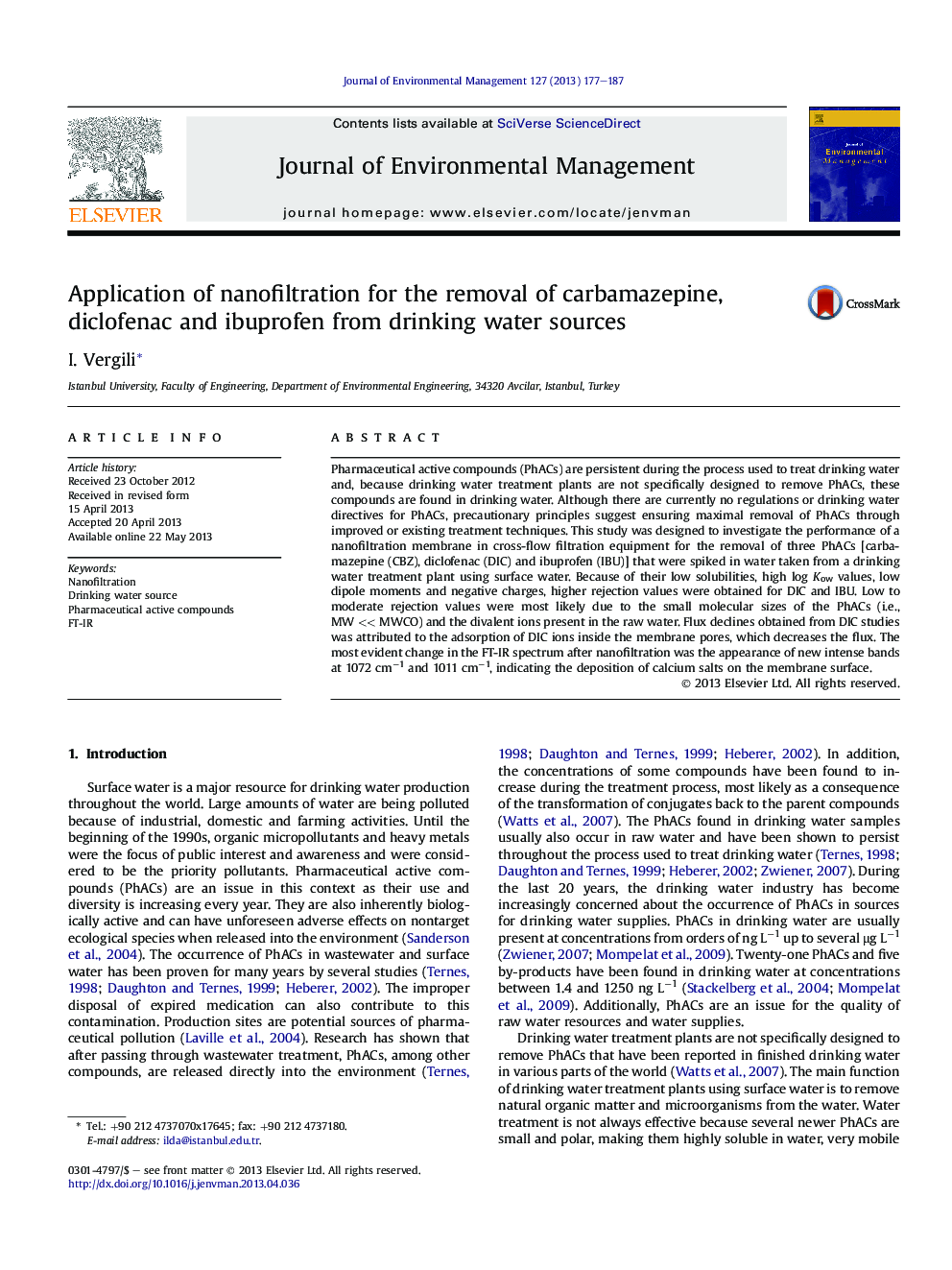| کد مقاله | کد نشریه | سال انتشار | مقاله انگلیسی | نسخه تمام متن |
|---|---|---|---|---|
| 1056020 | 1485285 | 2013 | 11 صفحه PDF | دانلود رایگان |

• Rejections of negatively charged PhACs were higher than rejections of neutral PhAC.
• Log Kows appeared to be more important than other physicochemical properties.
• The FTIR spectrum indicates deposition of calcium salts on the membrane surface.
• Divalent ions present in the raw water may have been effective in moderate rejections.
Pharmaceutical active compounds (PhACs) are persistent during the process used to treat drinking water and, because drinking water treatment plants are not specifically designed to remove PhACs, these compounds are found in drinking water. Although there are currently no regulations or drinking water directives for PhACs, precautionary principles suggest ensuring maximal removal of PhACs through improved or existing treatment techniques. This study was designed to investigate the performance of a nanofiltration membrane in cross-flow filtration equipment for the removal of three PhACs [carbamazepine (CBZ), diclofenac (DIC) and ibuprofen (IBU)] that were spiked in water taken from a drinking water treatment plant using surface water. Because of their low solubilities, high log Kow values, low dipole moments and negative charges, higher rejection values were obtained for DIC and IBU. Low to moderate rejection values were most likely due to the small molecular sizes of the PhACs (i.e., MW << MWCO) and the divalent ions present in the raw water. Flux declines obtained from DIC studies was attributed to the adsorption of DIC ions inside the membrane pores, which decreases the flux. The most evident change in the FT-IR spectrum after nanofiltration was the appearance of new intense bands at 1072 cm−1 and 1011 cm−1, indicating the deposition of calcium salts on the membrane surface.
Journal: Journal of Environmental Management - Volume 127, 30 September 2013, Pages 177–187